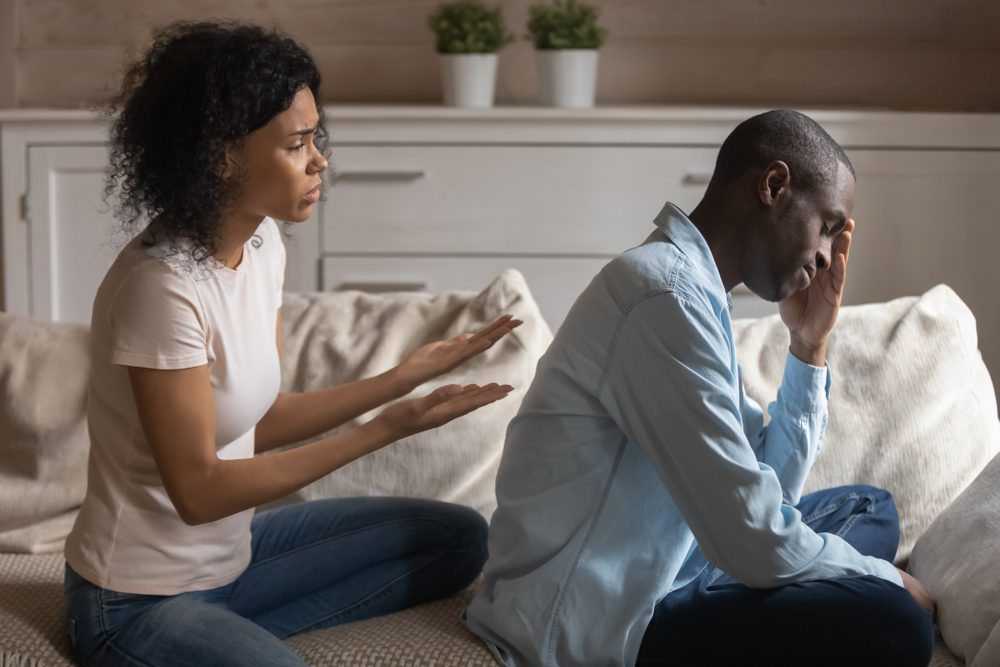Let’s get real, most of us would rather get a root canal than apologize, if you’re breaking into a cold sweat just thinking about saying sorry, you’re not alone. Turns out there’s a whole science behind why apologizing feels about as comfortable as wearing wet socks and eating cold fries at the same time.
The thing about apologizing is that it’s like trying to learn a TikTok dance when you have two left feet. We all know we should do it, but something in our brain short-circuits the moment we need to admit we messed up. Whether it’s that time you accidentally liked your ex’s Instagram post from 2019 or when you told your best friend their new haircut was “interesting,” we’ve all been there, hiding under our blankets hoping the situation magically resolves itself.
What’s actually stopping you from apologizing
Remember that time your parents told you to say sorry to your sibling and you felt like your soul was leaving your body? Well, that might explain a lot about your current apology avoidance. Science shows we’re basically copying what we saw growing up, and if no one was saying sorry in your house, you probably learned that apologizing was about as welcome as pineapple on pizza.
It goes deeper than childhood trauma. Our brains are literally wired to protect our egos like they’re the last piece of cake at a birthday party. When we make a mistake, our defense mechanisms kick in faster than you can say “it wasn’t my fault.” It’s like having an overprotective bodyguard in your head who’s ready to fight anyone who suggests you might be wrong about something.
The five stages of finally learning to say sorry
- First comes the self forgiveness stage, where you need to accept that making mistakes doesn’t make you a terrible person. Think of it like finally admitting that your ex’s dog wasn’t actually cute – it’s liberating. This stage is about being gentle with yourself, like using your fancy face mask on a random Tuesday just because.
- Next up is the empathy phase, where you actually imagine how the other person feels. This isn’t just putting yourself in their shoes, it’s more like wearing their entire outfit and walking a mile. It’s about understanding that your actions have consequences, even if those consequences weren’t what you intended, kind of like when you decide to cut your own bangs.
- Then there’s the gray area recognition, because life isn’t as black and white as your Instagram feed. Sometimes nobody’s completely wrong or right, and that’s okay. This stage is about accepting that most situations are messier than your junk drawer, and that’s perfectly normal.
- The responsibility stage hits next, where you own up to your part in the mess. This feels about as fun as watching paint dry, but it’s necessary. It’s like finally admitting that maybe, just maybe, you were a little dramatic in that group chat situation last month.
- Finally, there’s the thoughtful response phase. This is where you stop acting like a toddler who just had their candy taken away and start communicating like an actual adult. It’s about choosing your words carefully, like crafting the perfect text response instead of just sending keyboard smashes.
Why your brain fights against apologizing
Your brain treats apologizing like it’s a threat to your survival, which explains why you’d rather fake your own death than say sorry sometimes. It’s got everything to do with that fun cocktail of fear, pride, and straight-up panic that hits when you know you messed up.
Think about it like this, your brain is basically running an outdated operating system that still thinks admitting weakness might get you kicked out of the cave and eaten by a saber-toothed tiger. Except instead of actual tigers, we’re just dealing with Karen from accounting who definitely noticed you took her yogurt from the break room fridge.
The surprising benefits of becoming an apology pro
Think of apologizing like going to the gym for your relationships. Sure, it’s uncomfortable at first, but the results are worth it. You’ll start noticing your connections getting stronger, just like those biceps after a good workout session. Regular apologies can transform your relationships faster than a makeover montage in a rom-com.
When you become comfortable with apologizing, you’re actually flexing your emotional intelligence muscles. It’s like upgrading from a flip phone to a smartphone, suddenly you’ve got all these new capabilities you never knew you needed. People start trusting you more, conflicts resolve faster, and you might even sleep better at night without all that guilt weighing you down like that burrito you probably shouldn’t have eaten at midnight.
How to make apologizing feel less awful
Starting small is key, like practicing on your houseplants before moving on to actual humans. Begin with little things, like apologizing when you bump into someone in the grocery store instead of pretending it didn’t happen and speed-walking away. It’s about building up your apology muscles gradually, like how you don’t start with the heavy weights on day one at the gym.
Try practicing in low-stakes situations first. Apologize to your coffee maker when you forget to clean it, or to your phone when you drop it on your face while scrolling in bed. These mini-apologies help rewire your brain to see saying sorry as less threatening than a paper cut.
The secret sauce of a genuine apology
A real apology hits different than those fake ones we used to give our siblings. It’s not about just saying the words, it’s about meaning them. Think of it as the difference between store-bought and homemade cookies – both might look similar, but you can taste the authenticity.
The key ingredients of a genuine apology are like a perfect recipe, start with a cup of sincerity, add a tablespoon of actual remorse, mix in some genuine understanding of what went wrong, and top it off with a concrete plan to do better next time. Skip any of these ingredients, and your apology will fall flatter than that soufflé you tried to make that one time.
Your new apology game plan
Transform your apology game from amateur hour to professional level by making it a regular thing. Start small, like admitting when you’re wrong about random facts instead of secretly Googling them under the table. Build up to the bigger stuff gradually, like finally telling your friend their bangs actually weren’t working in 2018.
The trick is to make apologizing feel as natural as double-tapping on cute dog photos. Practice active listening when someone’s upset with you instead of immediately planning your defense like you’re preparing for a court case. Focus on understanding their feelings rather than winning the argument, because let’s be honest, being right isn’t always worth losing a friendship over.
Remember, becoming an apology expert isn’t about becoming perfect, it’s about becoming real. Think of it as adding another tool to your emotional toolbox, right next to that meditation app you downloaded but never used. The more you practice, the easier it gets, until one day you realize that saying sorry doesn’t feel like swallowing a cactus anymore.
And hey, if all else fails, remember that even celebrities have to apologize sometimes, and they usually have to do it in front of millions of people on X. At least your apologies don’t come with a trending hashtag attached to them.
















